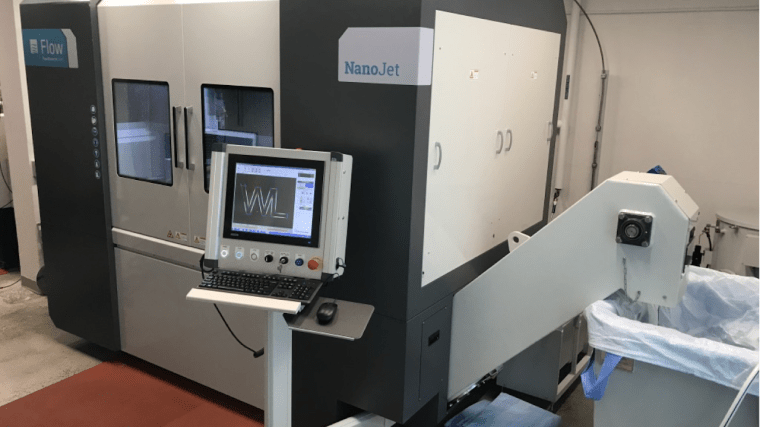Abrasive water jet cutting
The high-pressure abrasive water jet cutter can be best thought of as a computer-controlled bandsaw. It is largely used to cut through flat material stock.
Available to Yale researchers only
Core WebsiteJames A. Nikkel, PhD
Flow NanoJet

Our abrasive waterjet cutter is a 40kW, 6000 bar, fully enclosed machine with a cutting area of 100cm x 60 cm. In principle, anything up to about 10 cm thick can be cut, but there some limitations on what we may cut for safety reasons, and others that do not yield good results.
Capabilities
- Cuts material up to 10 cm thick
- ~10 μm positioning accuracy
- 1.2 m x 0.65 m cutting area
- Nozzle rises up to 15 cm vertically
- 0.02 mm / 0.3 m linear straightness accuracy
| Acceptable materials | Unacceptable materials | Difficult materials |
|
|
|
Design requirements
Your base material must have enough room around the part that you want to cut out so that it can be securely clamped down. You should have 5 cm of clearance along 2 edges for this.
We have two nozzles available, and their cutting "beams" have a diameters of about 1 mm and 0.4mm. Internal corners sharper than that are not possible, and very fine features can be tricky.